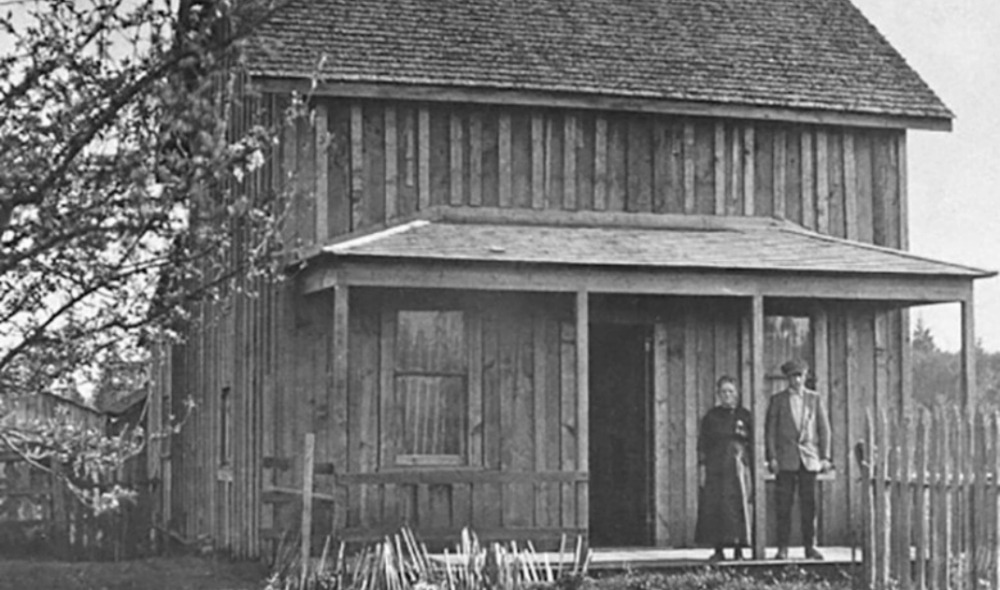Seattle’s National Nordic Museum, located in the early Scandinavian settlement of the Ballard neighborhood, helps describe the flavor and hopes of “old countries” such as Denmark, Finland, Iceland, Norway, and Sweden.
In many cases, Nordic immigration to America and Canada was caused by harsh economic times in the old countries, occurring between 1840 and 1920. Many Pacific Northwest Nordics experienced a stop or two along the way, sometimes for several generations.
The farming Midwest first attracted settlers with agricultural backgrounds. However, living in sod houses and coaxing a thin existence from dusty land proved difficult. New opportunities described by real estate speculators, the linking of railroads, an abundance of water, and favorable signals from pioneering relatives, brought many Nordics westward.
The Icelandic chapter in this story may be unique. Famine in the 1870s caused many Icelanders to sail westward to their most direct landfall, Eastern Canada. A number of these brave adventurers became established on the prairies and in the small towns of Manitoba. In the 1880s several Icelandic families stayed on a westward course, ending up in Vancouver and Victoria, British Columbia. Because of the high unemployment rate and an epidemic of infant cholera, many of these families moved to Point Roberts on the American West Coast.
Named by Captain George Vancouver, the two-and-a-half square mile area is isolated from the continental U.S. and adjoining Canada, but is American soil. Salmon canneries opened at Point Roberts in the 1890s and a paddlewheel steamer from Seattle made regular stops. Icelanders farmed, grew vegetable gardens, and did commercial fishing from their Point Roberts homes.
One Icelandic settler, Helgi Thorsteinson, wrote to his Iceland relatives in 1895 that his garden was exceptionally productive: “sixty pounds of beans, fifty pounds of onions, some corn and other small vegetables, nine big sacks of potatoes, and four sacks of rutabagas.” He also described his 30 chickens, seven pigs, a steer, two cows and two calves. “I would feel terrible if we had to leave this place, said Helgi. “I feel so well here, better than anywhere since I came to America. We look forward to a good future here. Our children are healthy and I have never been homesick since I left Victoria.”
Helgi Thorsteinson’s grandchildren, like many of his neighbors, found jobs in Puget Sound country, centered around the once-prosperous salmon industry. Likewise, a number of Seattle-area Icelanders are descendants of the Manitoba-Victoria-Point Roberts migration.
Many Nordics found the Pacific Northwest not unlike their Scandinavian roots, staying here and contributing to our region’s growth in myriad ways.

The story of nordic emigration to North America is quite compelling. In Sweden’s Kronoberg County, home of the historic Swedish art glass district, is the city of Växjö (pronounced “Vequah”). There, the House of Emigrants (Utvandrarnas Hus) is located in a park along with the Swedish National Glass Museum. The exhibits at Utvandrarnas Hus tell the story of the famine that swept through Scandinavia two centuries ago, and the well-orchestrated marketing efforts of ocean liner companies, tenement lords in American port cities, and job bosses from American timber and railroad corporations that methodically processed and transported workers across the Atlantic and then across North America. Some settled in the midwest and took familiar jobs in the copper mines of Michigan and the farm fields of the northern plains, others laid the rails that brought them to the timber forests and fishing grounds of the Pacific Northwest. It’s an epic tale, and the museum in Växjö tells it very well. I’d love to see a cooperative effort between the National Nordic Museum and Utvandrarnas Hus to tell more of that story in Seattle.
Wonderful history.
Thank you.
My Swedes came from Nora Rorum, Skane. My grandfather came to Seattle from Minnesota in 1908 and settled in Okanogan in 1910.